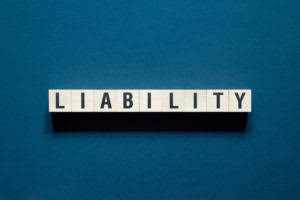
When doing the NRV calculations for accounts receivable, the allowance for doubtful accounts or bad debts takes the place of total selling costs. Inventory valued at net realizable value is those assets in inventory that include the expected selling price minus the total production cost. The total production and selling costs are expenses required to trade. Net realizable value is an important metric that is used in the lower cost or market method of accounting reporting.
In either situation (high inflation or high unemployment), it may be more difficult for clients or businesses to find budget for additional goods to buy. In such circumstances, the replacement cost of the materials may be the best available measure of their net realizable value. In other words, if when comparing the carrying amount asset against the net realizable value, the latter is below that of the carrying amount means that the entity must adjust inventories for this difference.
Module 8: Inventory Valuation Methods
Offering credit sales to customers is a common practice among many enterprises. There is a transportation fee of $320 for transporting all of the heavy couches from the business to the local mall. To make sense net realizable value formula of this, let's imagine a scenario where a business produces a type of nest basket for sale. This is because both nest baskets are produced using the same materials and goods, incurring identical costs.
- Let’s say the carrying cost of this machine in the balance sheet is $4000.
- When calculating the net realizable value, the accountant will sum up all receivables expected to be collected.
- Further, writing down inventory prevents a business from carrying forward any losses for recognition in a future period.
- The company subtracts these costs from the revenue generated from selling a TV.
Because the estimated cost of ending inventory is based on current prices, this method approximates FIFO at LCM. In other words, market was the price at which you could currently buy it from your suppliers. Except, when you were doing the LCM calculation, if that market price was higher than net realizable value (NRV), you had to use NRV. If the market price was lower than NRV minus a normal profit margin, you had to use NRV minus a normal profit margin. The estimated costs to complete the sale are all those costs necessary to carry out the transaction. Let’s say the carrying cost of this machine in the balance sheet is $4000.
Everything You Need To Build Your Accounting Skills
The entity estimates that it will complete its production in February of year 2; for this, it will need to incur 55,000 to end production at that date. Now let’s say after 2 years, the demand for that machine decline because of which the expected market price also decreases and now it has dropped to $4100 but the cost is the same at $4000. TranZact is a complete digital automation partner for Indian SMEs that solves valuation issues, achieving the target sales every time. Now if the market value of the product reduces in the coming year to 200rs, the NRV is 60 rs. So the company will have a 40 rs loss, which is the difference between cost and net realizable value.

Alternatively, when the economy is down, clients may pass on orders or find it more difficult to make full payments. Depending on the industry the company is it, the company may decide to accept a certain amount of uncollectable sales. The company may also lack the resources to pursue delinquent receivables. A large company like Home Depot that has a consistent mark-up can reasonably estimate ending inventory. Home Depot undoubtedly uses a more sophisticated version of this calculation, but the basic idea would be the same. If the replacement cost had been $45, we would write the inventory down to $45.
When do companies usually perform NRV?
Suppose a manufacturing company has 10,000 units of inventory that it intends to sell. On the accounting ledger, an inventory impairment of $20.00 would then be recorded. The company states that as part of its calculation of inventory, the company wrote-down $592 million. As part of this filing, Volkswagen disclosed the nature of the calculation of its inventory. In compliance with prevailing accounting regulation, Volkswagen considered net realizable value when determining its inventory value.

When using NRV calculations for cost accounting, these expenses are the separable costs that can be identified or allocated to each good. Alternatively, this "expense" may be the anticipated write-off amount for receivables or expenses incurred to collect this debt. Net realizable value, as discussed above can be calculated by deducting the selling cost from the expected market price of the asset and plays a key role in inventory valuation. Every business has to keep a close on its inventory and periodically access its value. The reason for that is there are several negative impacts like damage of inventory, obsolescence, spoilage etc. which can affect the inventory value in a negative way.
The accountant realizes that 5 out of the 100 accounts will be missing payments; therefore, those 5 accounts will be labeled as uncollected amounts. The net realizable value is an essential measure in inventory accounting under the Generally Accepted Accounting Principles (GAAP) and the International Financing Reporting Standards (IFRS). The calculation of NRV is critical https://www.bookstime.com/ because it prevents the overstatement of the assets’ valuation. Different companies may be exposed to different risks and business impacts that are factored into NRV calculations differently. For example, certain industries may necessitate dealing with customers that have riskier credit profiles, thus forcing the company to experience larger write-off allowances.


